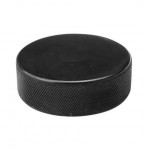I was the first Canadian journalist based in the Soviet Union when The Canadian Press Moscow bureau opened in June, 1964. Those were tense years. At first my wife and I lived in the office at the Hotel Ukraine under constant police surveillance. It troubled me. I lost weight and developed a debilitating skin condition which a local doctor diagnosed as “Mongolian mold.” It was more likely eczema.
The Red Square parades every November 7th and May 1st were fantastic. We sat in the stands and saw huge ballistic missiles, goose-stepping troops and members of the Soviet Politburo watching from the top of Lenin’s tomb. I saw both Khrushchev and Brezhnev and took very careful notes on who was standing closest to the Secretary General of the Communist Party. It was always a clue of what was happening with closed-door Soviet power struggles.
In 1965 the old guard started to tighten its grip and life became even more unpleasant in the Soviet Union. We weren’t allowed to journey more than 20 kilometres from the city without escort, and travel was an unhappy experience anyway. Roads were atrocious, infrastructure was crumbling and people were guarded. There were odd things too. You never saw anybody on the street who was disabled or in a wheelchair. They were warehoused. So many times since I’ve wondered what happened to those poor people.
There were few distractions. We saw the Bolshoi Ballet and the Moscow Symphony. We skated in Gorky Park. But the best outlet in that tense winter of 1965 was hockey.
The Allan Cup-champion Sherbrooke Beavers came to town to play the finest Red Army squad. The Beavers were the best amateur players Canada had to offer but they were no match for these great Russian fellows. The Red Army was absolutely dominant and scored only ten seconds into the first game. The Canadian players started a fracas as Russian fans yelled “Hooligani! Hooligani!”
The Canadian captain spit at the fans which nearly caused a riot. Hordes of Soviet policemen tried to maintain control. The Canadian ambassador Robert Ford threatened our players if they didn’t behave, the rest of the series would be cancelled. I wrote the story.
I played hockey too. The Canadian embassy team was called the Moscow Maple Leafs. Our sweaters were blue and white. I wore one though I was a Habs fan. I was a defenceman; my colleague Peter Worthington of the Toronto Telegram played forward. Peter was a good little hockey player and liked to wear number 007 on his sweater.
We practiced on the Americans, who weren’t very good, but had a defence attaché who’d played football for the Baltimore Colts. That guy was rough on his skates but he seemed to worry the KGB secret police who came to watch our practices. A few times the agents got a puck in the stands and were lucky to keep their teeth. Our team defeated the Czech embassy two years in a row but we lost to Tass, the Soviet News Agency.
There were only about half a dozen indoor rinks in all of Moscow in those days. One of them was called the Lenin Arena. The rest of the ice was outdoors and those games were freezing.
We had our hockey equipment shipped over from Canada but once I took a chance on a pair of skates purchased for next to nothing on the Russian market. I was sailing along nicely during a game when suddenly I went crashing into the boards. My body was draped over the boards and I could not breathe for thirty seconds.
I thought I was going to die but recovered with only a few bruised ribs. Inspecting my skates later I discovered the blade had pulled right off the poor-quality boot. Soviet-era workmanship almost killed me.
At the end of three years CP invited me to stay on in Moscow but I felt it was time to leave. When you’ve seen one Soviet ice rink, you’ve seen ‘em all.
(Editor’s note: the author is a Life Member of the Canadian Parliamentary Press Gallery)






